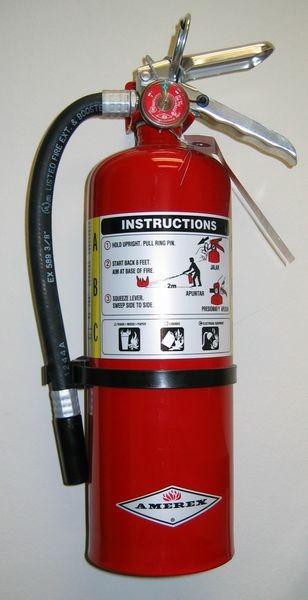Use the following format to cite this article:
Fires in the home: Prevention and preparedness. (2012). Farm and Ranch eXtension in Safety and Health (FReSH) Community of Practice. Retrieved from http://www.extension.org/pages/63194/fires-in-the-home:-prevention-and-preparedness.
A fire can happen anywhere and at any time in a home. Fires and burns are the main causes of accidental injury deaths at home, with older adults and small children at the greatest risk. Careless smoking is the leading cause of accidental fires.
The recommendations in this article can help you reduce the risk of a home fire and prepare your family in the event of a fire. In addition to these recommendations, make sure that everyone in your house knows how to call 911 in the event of an emergency.
Smoke Detectors/Alarms
Smoke detectors are designed to detect fires and alert building occupants to the presence of smoke. According to the U.S. Fire Administration, the use of smoke detectors can reduce the risk of fire fatality by approximately 50%.
Smoke detectors are necessary on every level of a home and especially outside of sleeping areas. Maintain smoke detectors by testing them every month and changing the batteries twice a year. To help you remember to change the batteries regularly, make a habit of changing smoke detector batteries in the spring and fall when you change your clocks to adjust for daylight saving time. Residential guidelines for smoke detector installation and maintenance vary by state.
Fire Extinguishers
Multiple fire extinguishers should be located strategically throughout your home. Always keep an all-purpose ABC fire extinguisher (rated for ordinary combustibles, grease, and electrical fires) in your kitchen. Place the kitchen extinguisher in a location that is easy to reach in the event of a stove fire. Keep additional fire extinguishers in areas where fires are likely to start, such as the garage or near the furnace.

(Source: Pennsylvania State University. Agricultural Safety and Health)
Everyone in your household should know the location of fire extinguishers, and those family members who are capable should be trained in how to use them properly. To operate a fire extinguisher, remember the acronym PASS:
P – Pull the pin. Hold the extinguisher with the nozzle pointing away from you and release the locking mechanism.
A – Aim low. Point the nozzle of the extinguisher at the base of the fire.
S – Squeeze. Slowly and evenly squeeze the lever.
S – Sweep. Sweep the nozzle from side to side.
Fire extinguishers are affordable and can save lives and property. The most versatile type of extinguisher is a 10 lb., ABC extinguisher, which can be used on different types of fires. Each of the following types of fire extinguishers is designed to put out a specific type of fire.
| Extinguisher Class | Usage |
| Class A | Fires of combustible materials such as clothing, wood, rubber, paper, and some plastics |
| Class B | Fires involving flammable liquids, such as grease, gasoline, oil, and oil-based paints |
| Class C | Fires that involve appliances, tools, or other types of equipment plugged into an electrical outlet |
| Class D | Fires involving flammable metals; typically found in factories |
| Class K | Fires involving vegetable oil, animal oils, or fats in cooking appliances; typically found in commercial kitchens, but the residential market continues to grow |
| Multipurpose | Different types as described in the categories above (for example, ABC or BC) |
Like smoke detectors, fire extinguishers require regular maintenance. You should shake dry chemical extinguishers monthly to prevent the powder from settling. Follow the manufacturer’s directions concerning pressure testing and replace a unit if it will not charge or is damaged.
View the video below about fire extinguisher usage by the Fire Equipment Manufacturers’ Association.
Escape Routes and Plans
Before a fire occurs, develop an escape route with your family. An escape route should be planned for each area of the home and should include a designated family meeting area in an outside location away from the fire. Draw a map and practice the escape route so that every family member is familiar with the plan. Instruct family members to crawl underneath the smoke when escaping a fire and to “stop, drop, and roll” if their clothing is on fire.
If your home has multiple levels, purchase an escape ladder to provide safe exit from upper levels. All family members need to know the location of the escape ladder and be familiar with its use. Sleeping rooms should have two routes of escape, such as a door and a window. If a window is an exit route, make sure that the window opens properly. Once you and your family are out of the house, call 911 and do not go back into the house for any reason.
Resources
Click HERE to visit the U.S. Fire Administration website for information and resources to plan your home fire escape route.
Click HERE to be directed to a Fire Safety for Kids infographic provided by ContractQuotes.us.
Use the following format to cite this article:
Fires in the home: Prevention and preparedness. (2012). Farm and Ranch eXtension in Safety and Health (FReSH) Community of Practice. Retrieved from http://www.extension.org/pages/63194/fires-in-the-home:-prevention-and-preparedness.
Sources
Choosing and using fire extinguishers. (2015) U.S. Fire Administration. Retrieved from http://www.usfa.fema.gov/prevention/outreach/extinguishers.html.
Home fire escape planning outreach materials. (2014) U.S. Fire Administration. Retrieved from http://www.usfa.fema.gov/prevention/outreach/escape.html.
Keeping kids safe from fires. (2015) U.S. Fire Administration. Retrieved from http://www.usfa.fema.gov/prevention/outreach/children.html.
